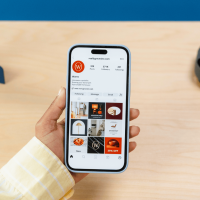
In today’s high-speed digital era, the traditional model of academic research is itself being transformed. Technology is evolving at light speed, and students today must make digital tools their partners if they are to conduct deep, effective, and genuine research. From smart search engines to writing aids powered by artificial intelligence, technology has gone beyond being an add-on component of education—it is now the core of modern scholarship.
This article explores the pivotal role these tools play, the challenges they solve, and how businesses can align themselves with this digital academic shift.
From the Library to the Cloud: The Evolution of Research
It was not that long ago when students spent hours and hours trudging through physical libraries, meticulously flipping through reference books, taking notes by hand, and waiting in line for photocopiers. Today, all those long hours have been condensed into a few minutes thanks to the likes of Google Scholar, JSTOR, and academic databases such as ScienceDirect. They provide instant access to millions of peer-reviewed journal articles, journals, and studies on almost every academic topic under the sun.
But it’s not just access that’s been altered—it’s the quality and speed of comprehension. Software like Zotero and Mendeley help students not only to store and organize references, but to share work with others and produce citations in many styles in an instant. That reduces the chance of citation errors and eliminates time devoted to formatting—an area where many students are vulnerable.
Besides, digital note-taking software like Notion, Evernote, and OneNote allow students to organize research around themes, merge multimedia elements like images and charts, and work collaboratively by sharing notebooks with peers. These programs have significantly enhanced students’ ability to hold, structure, and communicate complex information.
AI-Powered Writing and Research Support
Artificial intelligence is playing a big role in reshaping the style of writing, editing, and refining academic assignments done by students. Programs like Grammarly, Hemingway Editor, and ProWritingAid offer real-time grammar suggestions, stylistic improvements, and readability enhancements. They help students refine their assignments while acquiring writing style and grammar along the way.
Even more advanced AI tools such as ChatGPT, Jasper, or Scribbr provide brainstorming, content summarization, paraphrasing, and even literature assistance. Such programs can be utilized as idea generators or sparring partners for developing thesis statements, refining arguments, or sketching out challenging research papers.
Moreover, the majority of the students require assistance in writing and the WriteMyEssays dissertation writing service comes in handy, creating an ordered and academically credible final product. Such companies can provide students with the proper guidance on how to structure arguments, understand the conventions of format, and generate logical narratives, especially for non-native English speaking or language-barred students.
Increased Cooperation and Cloud Integration
Collaboration is also one area that has dramatically evolved with the use of digital resources. Tools such as Google Docs, Microsoft Teams, Slack, and Zoom enable students to collaborate in real time from anywhere. These tools facilitate synchronous editing, video conferencing, chat features, and shared calendars—making seamless academic collaboration possible.
Mind mapping tools like Miro and Lucidchart and digital whiteboards continue to take the collaborative process to another level. These offer visual workflow planning and brainstorming, which is often required in group or inter-disciplinary research studies.
Cloud storage options like Dropbox, iCloud, and Google Drive ensure students never lose work in case of device failure or accidental deletion. Automatic saving, versioning, and access to any device provide students with confidence and dependability. This digital safety net offered by technology allows students to experiment and iterate with confidence without risking lost work.
Data Analysis and Visualization
One of the most significant student research advances is more access to data analysis and visualization tools. Programs like Tableau, SPSS, RStudio, and Excel enable students to conduct statistical analysis, create prediction models, and present complex data sets using graphs, charts, and heat maps. These skills are now more and more demanded both in business and academics.
Students conducting quantitative research studies can gather data through surveys, interviews, or experiments and interpret it using statistical formulas that already exist in their system. SurveyMonkey, Google Forms, Typeform, and Qualtrics are just a few examples of software used for data gathering and are easily compatible with analytical tools.
For visual storytelling, one is able to use tools like Canva, Infogram, and Piktochart to create engaging infographics that are capable of summarizing complete research findings at a glance. The tools not only allow expression of findings in a better way but can also make academic posters and presentations more visually appealing.
Accessibility and Inclusivity
Technology is making student research more accessible and inclusive than ever before. Screen readers such as NaturalReader, Kurzweil 3000, and Voice Dream Reader help visually impaired or dyslexic students by having text read out to them. Similarly, screen magnification, contrast adjustment, and voice input help with a variety of learning needs.
Language obstacles are also being dismantled by tools like DeepL Translator, Google Translate, and Reverso, which enable non-native speakers to engage with, read, and be part of worldwide academic discussion. Academic content is increasingly available in different languages, encouraging more global participation from overseas students and diverse research perspectives.
Challenges and Ethical Issues
While many benefits, the expanding use of digital tools introduces fresh challenges. Ease of copying material increases the risk of plagiarism, both intentional and accidental. Institutions of learning therefore need to spend money on technology (like Turnitin and Unicheck) and training in order to transfer ethical research practice.
AI content is a two-edged sword. Although ChatGPT and other such tools assist with ideation and summarizing, they also tempt students to bypass important in-depth thinking. Students may over-depend on automated tools and lose the critical thinking abilities in analysis and argumentation if left to themselves with them.
Also, privacy matters, algorithmic prejudice, and unequal access to digital content are all pressing issues that must be under close examination. Schools must ensure equal access to the tools and training in their appropriate and effective use.
Institutional Adoption and Future Trends
Innovative universities are already incorporating digital literacy and tool-based research skills training into their programs. For example, MIT and Stanford University have programs aimed at teaching students how to properly use digital platforms in accomplishing school and career success.
Some institutions are even partnering with EdTech startups to develop custom-made tools tailored to their students. As machine learning continues to progress, smart research assistants, able to detect sources, predict forthcoming citations, and adapt themselves to a student’s academic approach in real-time, could be coming soon.
Blockchain technology is also being studied for its potential use in academic credentials and research verification, introducing transparency and permanence into scholarship. These technologies can transform knowledge production, verification, and dissemination.
What This Means for EdTech and Digital Solution Providers
For edtech players, this transformation offers immense possibility. Startups and established firms can create tools to meet evolving student and institutional needs. Be it student writing platforms, cloud collaboration software, or AI-based learning assistants, the need for secure, scalable, and easy-to-use tools can only rise.
Besides, research-backed trend analyses, EdTech founder interviews, and thought leadership articles can attract students, teachers, and decision-makers in unison—building credibility and influence within a growing digital education space.
Final Thoughts
Technology has irretrievably changed the world of student research. They provide speed, convenience, and ease of use that previous generations could only have dreamed of. With them, though, comes a responsibility to use technology in an ethical and thoughtful way, developing critical thinking as much as convenience.
For students, these technologies represent empowerment and deeper learning results. For educators, they introduce challenges and opportunities for new degrees of engagement. And for makers of digital solutions and content platforms, they represent the next frontier of eduinnovation. Adapting and navigating this shift isn’t only good for your business—it’s necessary to stay relevant and effective in a teaching world that is increasingly tech-savvy.

Founder Dinis Guarda
IntelligentHQ Your New Business Network.
IntelligentHQ is a Business network and an expert source for finance, capital markets and intelligence for thousands of global business professionals, startups, and companies.
We exist at the point of intersection between technology, social media, finance and innovation.
IntelligentHQ leverages innovation and scale of social digital technology, analytics, news, and distribution to create an unparalleled, full digital medium and social business networks spectrum.
IntelligentHQ is working hard, to become a trusted, and indispensable source of business news and analytics, within financial services and its associated supply chains and ecosystems










